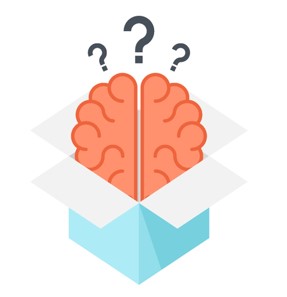9 The Individualized Education Program

The essential document when receiving special education services is the Individualized Education Program (IEP). It must be developed, reviewed, and revised in accordance with the requirements outlined in the IDEA in 34 CFR 300.320 through §300.324 which includes the
- the definition of an IEP
- the IEP team
- parent participation
- when IEPs must be in effect, and
- the development, review, and revision of the IEP
LITIGATION
Many of the exemplar court cases provided in Chapters 3 through 8 to highlight the six principles of IDEA are also relevant to the development and implementation of the IEP. In particular, the IEP can be viewed as an instrument of the principle of free appropriate public education, or FAPE (Chapter 5). Past litigation relevant to IEP-based decision making and the implementation of special education services through the IEP is an essential basis for the current and ongoing litigation that helps protect the rights of students and families under IDEA. Revisit the court cases highlighted in previous chapters to view them through the lens of IEP development and implementation to understand the critical considerations for ensuring students with disabilities have access to a free, appropriate, public education.

RESOURCeS
- The Center for Parent Information and Resources provides modules with detailed information about IEPs:
- The Short-and-Sweet IEP Overview – This webpage from the Center for Parent Information & Resources provides a brief overview of the key requirements and components of the IEP.
- Module 12 – The IEP Team – Available in both Spanish and English, this module from the Center for Parent Information & Resources provides detailed information about each of the members of the IEP Team through slides and handouts.
- This webpage from the Center for Parent Information & Resources provides a brief overview of who is part of the IEP Team.
- Module 13 – Content of the IEP – Available in both Spanish and English, this module from the Center for Parent Information & Resources provides detailed information about the requirements for IEPs under IDEA.
- Archived Guide to the Individualized Education Program – This detailed guidance from the US Department of Education breaks down key aspects of IEP development and implementation as a resource for educators, parents, and local and state educational agencies.
- Prior Written Notice Model Form [PDF] – This resource is an exemplar Prior Written Notice form provided by the US Department of Education Office of Special Education Programs for states and local educational agencies in support of their clear communication with parents regarding the provision of a free appropriate public education for their child with a disability.
- Guidance on Required Content of Forms Under Part B of the IDEA [PDF] – This resource from the US Department of Education provides guidance and an exemplar Procedural Safeguards document in accordance with the requirements of IDEA for the purpose of ensuring parents/guardians receive complete information about the of the procedural safeguards available under federal regulations.
- Code of Federal Regulations Requirements for Parent Involvement in the IEP – This resource provides the requirements for Parent Participation in the IEP Team from the Code of Federal Regulations.
- Considerations for IEP development – This resource, available from the IRIS Center, presents an audio and transcript version of an interview with Jim Shriner, PhD, Associate Professor of Special Education, University of Illinois at Urbana-Champaign about developing and documenting supplementary aids and services, and program modifications or supports for school personnel within IEPs. (time: 9:10)
- Developing High Quality Individualized Education Programs(IRIS Module)
- VDOE Introduction to writing a Standards-Based IEP (narrated) [Note that detailed training modules and slide decks are available from the VDOE’s webpage on the Standards-Based IEP.]
- Standards Based IEP Guidance Virginia [PDF] – This guide from the Virginia Department of Education is designed to support IEP teams with the development of IEPs that support the access of students with disabilities to the general education curriculum in alignment with the Virginia Standards of Learning.
The IEP Team Process:
- The IEP Team Process: Chapter 1 – IDEA and IEPs This introductory video, part of a series, offers an overview of IDEA, FAPE, and IEPs. (Time: 4:20)
- The IEP Team Process: Chapter 2 – The IEP Team Meet the members of a properly constituted IEP team in this video from ECACorg, part of their ongoing series. (Time: 4:35)
- Virginia’s Model IEP Form – This is a sample IEP form shared by Virginia Department of Education.
- Virginia IEP – This webpage provides information and a list of FAQs about IEPs in Virginia.
- The Early Childhood Technical Assistance Center (ECTA) provides a free training package on Developing High-Quality, Functional IFSP Outcomes and IEP Goals. It includes scripted PowerPoint presentations, handouts, activities, videos, and supplemental materials.
Secondary Transition in the IEP:
- VDOE Fast Fact Secondary Transition: Why it is important to plan early? [PDF]– This one-page Fast Fact sheet from the Virginia Department of Education provides a brief discussion of the importance of planning for the transition from school to post-school.
- A Transition Guide to Postsecondary Education and Employment for Students and Youth with Disabilities (August 2020)– This guide was developed to help students and youth understand how state education agencies, local education agencies, and vocational rehabilitation agencies work together, and as a guide to help achieve post-school and career goals.
- Transition of Students With Disabilities To Postsecondary Education: A Guide for High School Educators – This guide was developed to help educators help students get ready for post-secondary education.
- USDOE IDEA Topic Area: Secondary Transition – This website from the US Department of Education provides the IDEA-based definitions and links to other federal resources related to secondary transition.
- I’m Determined – This is a project of the Virginia Department of Education for supporting the self-determined behavior of youth with disabilities, particularly as they approach the age of transition. The I’m Determined website has resources for youth, families, and educators and highlights the essential elements of self-determination.
Transition from Early Intervention (Part C) to Preschool (Part B 619)
- VDOE Shared Resources on EI to ECSE Transition – This page of the Virginia Department of Education website shares state resources on the transition from early intervention to early childhood special education.
- Transition from Part C to Part B Question and Answer Document – This question and answer document was developed by the Virginia Department of Education and the Infant and Toddler Connection of Virginia and provides essential definitions and information about the transition process from early intervention to early childhood special education. The document is designed to inform professionals involved in these processes about some of the technical elements of the process.
- From Early Intervention to Preschool: A Toolkit for Parents – This resource from Vanderbilt Kennedy Center and Vanderbilt Consortium LEND provides a clear summary of the transition process for children and families receiving services under Part C of IDEA (early intervention) to receiving services under Part B, Section 619 of IDEA (early childhood special education). Included are explanations of IDEA, parental rights within the transition process, and what parents can expect through transition, eligibility, and IEP processes and meetings. Though some information in specifically tailored to the context of Tennessee, the general information about transition captures the essential details of the process.

Discussion Questions:
- What does partnership and collaboration with the parents (guardians) of a student with an IEP look like?
- What might a special education teacher do to help the parents of a child with a disability feel prepared and informed in advance of an IEP meeting?
- What evidence would let the IEP team know that a student’s IEP is appropriate and effective for that student? What evidence would suggest that the IEP as written is inappropriate or ineffective? Consider the perspectives of parents (guardians), the general education teacher(s), the special education teacher, and any related services providers.
Please use this Google Form to provide your feedback to authors about content, accessibility, or broken links.

